Welcome To Vietnam News
Popular Posts This Week
Popular Posts This Month
Home » News
Beautiful 300-year-old house in Duong Lam ancient village
Sunday, April 6, 2014
Duong Lam, in Son Tay town, Hanoi, Vietnam, is the first-recognized ancient village in Vietnam. The ancient village has a history of about 1,200 years with many houses dating back up to 400 years.
Two of Vietnam’s kings, Phung Hung (761-802) and Ngo Quyen (896-944) were born in Duong Lam, giving the village its prestige. Both men led resistance wars against northern invasion and after winning national independence, were crowned kings. After their deaths, the local people built temples in their honor.
Today, Duong lam village still retains most of the basic characteristics of a village of Vietnam with port village, trees, courtyard, temples, well, water fields… The roads of Duong lam were special because they have the shape as the bones of fish. Some features are still kept in Duong Lam ancient village is the old village gate in Mong Phu village.
Duong Lam has 956 traditional houses, Dong Sang has 441 houses, Mong Phu has 350 houses and Cam Thinh Has 165 houses. Many houses have been built a long time ago (in 1649, 1703, 1850…). Characteristics of the old traditional houses are all built from blocks of laterite. The trade village here is also famous and quality of the village is not inferior to the same village such as: Ban village, Cu Da…
The communal house is a worshipping place of the god – founder of the village. The ancient village consists of 5 villages so it has 5 communal houses. Doai Giap and Cam Lam communal houses dedicate to Phung Hung – the national hero who won the victory against invaders under Duong Dynasty; Cam Thinh communal house dedicates both the founder of the village and great mandarin Cao Phuc Dien – the hero under Le Dynasty. Dong Sang communal house worshiped the God but it was destroyed by fire and was restored by financial support from people. The god Tan Vien Son was dedicated in Mong Phu communal house. So far, Mong Phu communal house is a gathering place of the villagers for cultural activities. The communal house was made carefully with sophisticated decoration details. It is considered as a flower of unique sculptural architecture.
For a tangible culture relic, Duong Lam has 21 relic sites, consisting of temples, pagodas and tombs and ten of which have been classified as national and provincial relics. For an intangible cultural relic, Duong Lam has preserved various festivals, customs and literature on the people and land of Duong Lam through different period of time. For ecological environment, Duong Lam has many beautiful scenes linked with legendary stories such as Guom Hill, Ho Gam Hill and tales on the two kings Phuong Hung and Ngo Quyen.
Some pictures of 300-year-old houses in Duong Lam:
The house of Mr. Nguyen Huyen impresses visitors with the green trees.
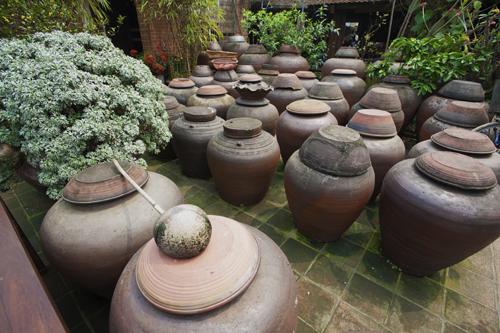
This family earns their living by making soybean sauce. Soybean sauce is processed right on the brick-paved yard.

The main house is designed in traditional style, with wooden columns with a diameter of 30cm.

Huyen decorates his house with parallel sentences and objects of the old time like cigarette bowls, porcelain cups, oil lamps...
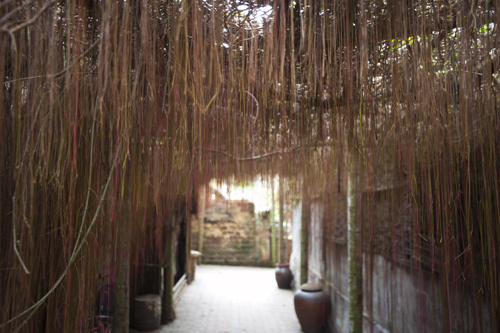
The house of Mr. Nguyen Van Hung has the gate built by the ancient material – a mixture of rock, soil, rice husk and mud.
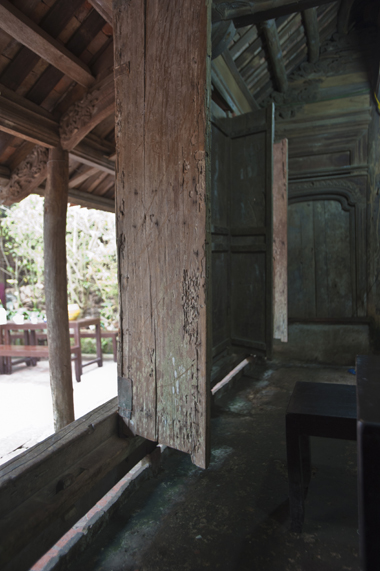
The house was built in 1649, primarily by jackfruit wood and ironwood. After more than 300 years, the time stamps have appeared on the doors.
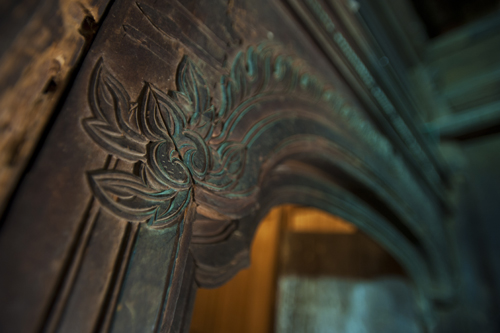
The door with sophisticated motifs.
 The altar in the center of the house. The altar in the center of the house.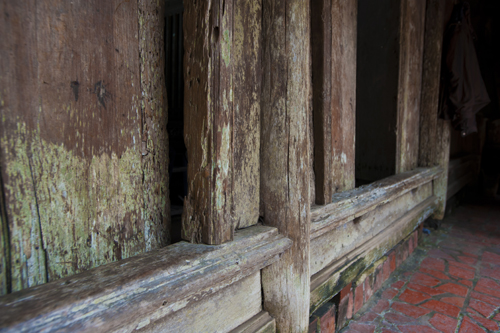
This house, owned by Ms. Duong Lan was built in 1780, which belonged to her husband's ancestor – a mandarin and a teacher. The threshold is very high so people have to bow when they step through it. Lan explains that the threshold is high to prompt the visitors to respect a mandarin and a teacher.
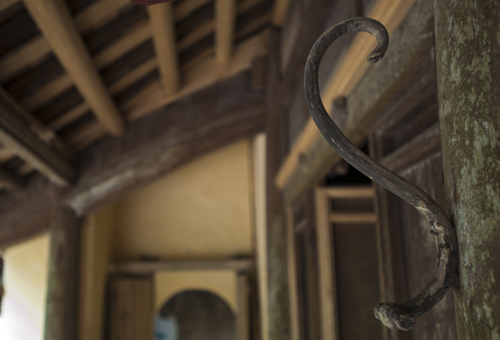
This horn-shaped ornament only appears in the house of mandarins.
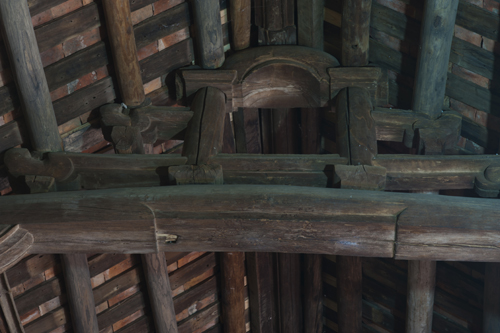
The house is still good after 300 years.
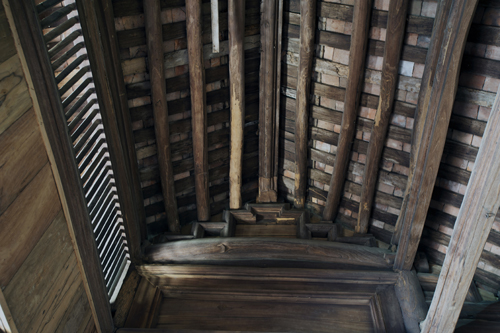
Ancient houses are cool in summer and warm in winter. In addition, open space and the ability to make the most of natural light are also the advantages of Duong Lam ancient houses.
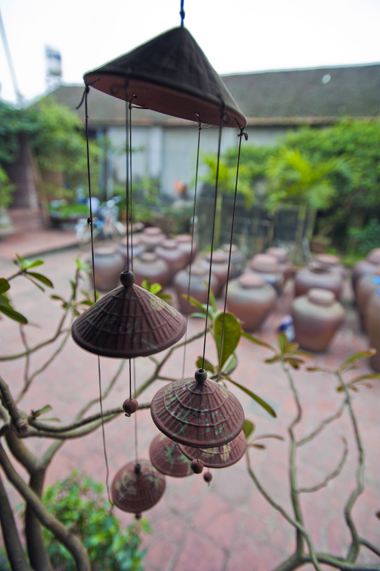
Wind chimes are popular decorative items in Duong Lam.
|





Comments[ 0 ]
Post a Comment